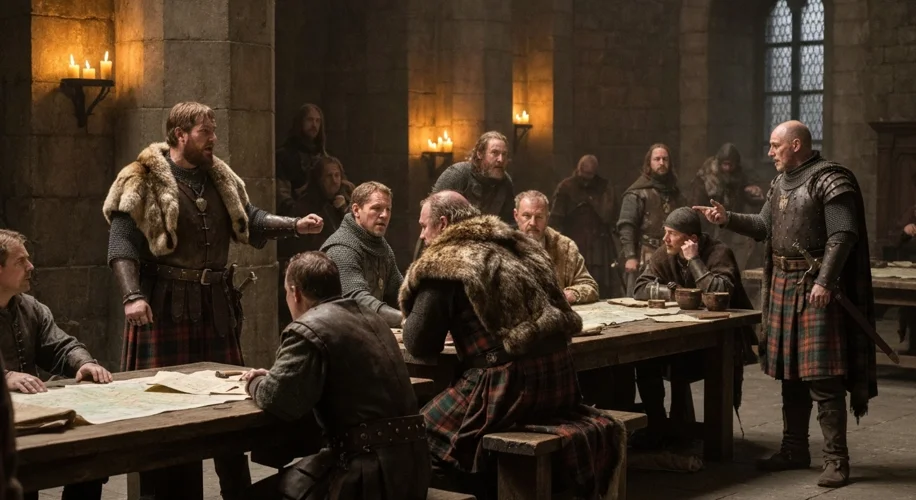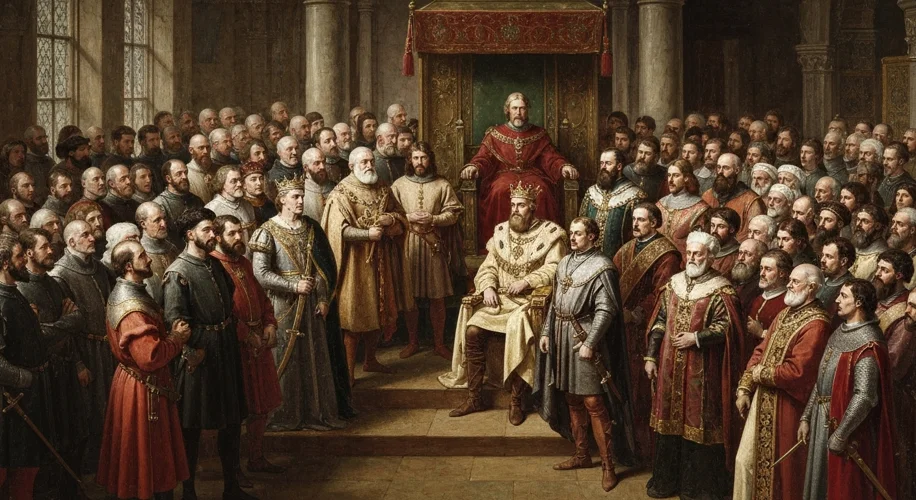In the grand tapestry of Scottish history, certain families are woven into the very fabric of the nation’s identity. Clan MacDuff, renowned for its ancient lineage and martial prowess, once held a unique and sacred right: the privilege of crowning the Kings of Scots. This wasn’t merely a ceremonial honor; it was a symbol of legitimacy, a deep-seated tradition binding the monarchy to the very soul of Scotland.
But as the centuries turned, the winds of political change began to blow, and the MacDuffs’ ancient prerogative, like a candle in a gale, flickered and eventually extinguished. What led to the erosion of such a profound right, and what does this tale tell us about the shifting currents of power in medieval Scotland?
To understand the MacDuffs’ role, we must cast our minds back to the turbulent 11th century. The reign of Malcolm II (1005-1034) is a pivotal period. Scotland, then known as Alba, was a collection of kingdoms and regions, often at odds with each other. Malcolm II, through a series of shrewd maneuvers and military victories, consolidated his power, laying the groundwork for a more unified Scotland. It was during this era that the powerful House of Dunkeld rose to prominence, and the MacDuffs, a powerful clan from Fife, emerged as crucial allies.

The tradition of the MacDuff crowning the king is often linked to the support they provided to Duncan I, Malcolm II’s grandson, who succeeded him in 1034. Duncan, a figure often romanticized in literature, faced challenges to his throne, including the formidable presence of Macbeth. The MacDuffs, it is believed, played a significant role in securing Duncan’s coronation, and in doing so, cemented their hereditary right to perform this solemn act. This right was not merely symbolic; it was a potent political tool. The presence of the Earl of Fife, the chief of Clan MacDuff, at the coronation ceremony lent an air of divine sanction and popular endorsement to the new monarch.
For centuries, this tradition held firm. The Earl of Fife, clad in ceremonial robes, would place the crown upon the head of the new King of Scots. This act was more than just a transfer of regalia; it was a public declaration that the king’s legitimacy was recognized by one of Scotland’s most powerful and respected families. The coronation of Alexander III in 1249, for instance, saw the young Earl of Fife perform this duty, highlighting the enduring nature of the custom.
However, the 13th and 14th centuries brought seismic shifts to Scotland. The death of Alexander III in 1286 without a direct heir plunged the kingdom into the devastating Wars of Scottish Independence. This period of existential crisis tested the allegiances and the very survival of Scotland.
During these wars, the English, under Edward I, sought to control Scotland’s destiny. They interfered in the succession, exploiting internal divisions. While many Scottish nobles supported Robert the Bruce, the political landscape became incredibly complex. The Earl of Fife at the time, Duncan MacDuff, was a young boy when the wars began, and his loyalties, or perhaps his family’s, became a point of contention.

Crucially, the line of the Earls of Fife, the leaders of Clan MacDuff, eventually died out in the male line. The last male heir died in 1353. While the earldom passed through a female line, the complexities of inheritance, combined with the tumultuous political climate, began to undermine the MacDuffs’ traditional authority. The Scottish crown itself was in flux, with dynasties vying for power. In such an environment, traditional rights, however ancient, could be sidelined.
The final blow to the MacDuff right came with the coronation of Robert II in 1371. Robert II, the first of the Stewart kings, was crowned at Scone. However, the ceremony did not involve the Earl of Fife in the traditional manner. Instead, the ceremony was presided over by the Earl of Carrick (Robert the Bruce’s son, who later became David II) and the Earl of Douglas. The absence of the MacDuff Earl of Fife from this pivotal moment marked a significant break from tradition.
Why did this happen? Several factors likely converged. The male line of the MacDuff Earls had ended. The political power and influence of the Earldom of Fife may have waned relative to other rising noble houses, such as the Douglases and the Stewarts themselves. Furthermore, the Stewarts, a new royal dynasty, might have been disinclined to perpetuate a tradition that highlighted the power of another family in their own accession. The focus shifted from ancient hereditary rights to the pragmatic consolidation of royal power.

The loss of the right to crown the monarch was a gradual decline, rather than an abrupt overthrow. It was a casualty of war, shifting political alliances, dynastic changes, and the eventual extinction of the direct male line of the Earls of Fife. The MacDuffs remained an important clan, but this unique ceremonial role, a vestige of a more ancient Scotland, was lost to the annals of history.
This story serves as a potent reminder that even the most entrenched traditions can be swept away by the relentless tide of historical change. The rights of Clan MacDuff to crown the kings of Scots, once a cornerstone of royal legitimacy, ultimately succumbed to the complex interplay of power, politics, and the ceaseless evolution of the Scottish state.

